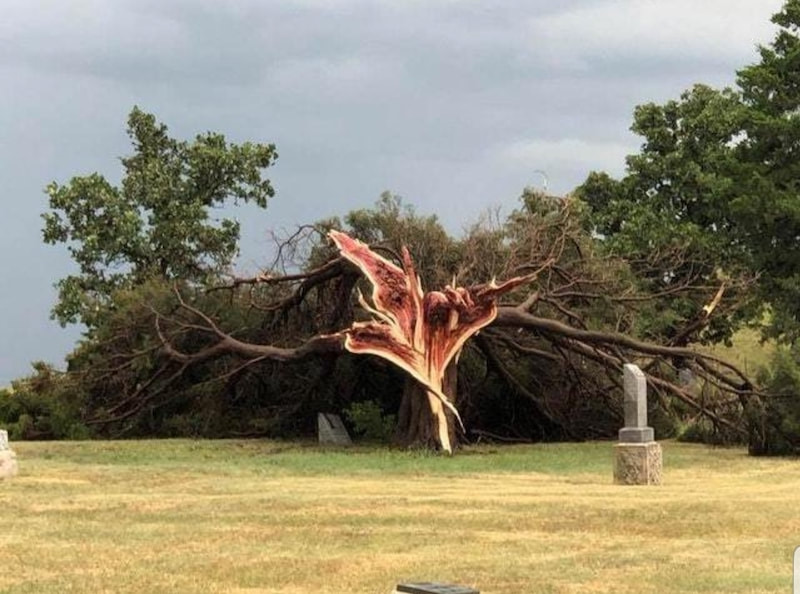|
A tree naturally becomes a lightning rod in times of storms, as it towers over houses and some buildings. There are approximately 100 lightning strikes per second worldwide, which means trees get hit by lightning more than you can imagine. While not all trees are vulnerable to lightning strikes, some can get severely affected.
When a tree gets struck by lightning, it can experience damage ranging from physical to internal ones. Obvious signs of damage include blowing off the bark, broken limbs, and splits in the wood. You may also notice charred areas on its trunk caused by burning from the heat of the lightning. The heat produced by the strike can cause the sap to turn into steam, creating bumps in the tree's bark that will kill its vascular system in time. If this is the case, the tree may look normal at first, but leaves will begin to fall off after a few days. Here is what you should do when your tree gets struck by lightning: It's important to know that most trees overcome lightning strikes. If your valued tree was hit by lightning, it is vital to know that it doesn't automatically mean death for your tree. Century-old trees have been struck by lightning more than we can guess but have managed to survive its effect. If your tree has been struck by lightning, don't panic. Stay calm and assess the situation with a sound mind. Ensure the safety of the area surrounding the tree. Do not get too close to the tree after a storm. Watch out for falling branches, downed electrical lines, and other tree-related debris. Ensure your family's safety, as well as your pets, and stay away from the site until the utility company has dealt with the affected power line and a tree service has assessed the tree. Contact a certified arborist to examine the tree's condition. Get in touch with a professional arborist in your area to conduct a thorough assessment of the lightning-struck tree. It is crucial to ask professional assistance to evaluate the condition of your tree to make sure you can give the correct treatment for your tree. The arborist may need to trim broken branches, brace and cable the weakened branches, or provide additional nutritional reinforcement. Remove all broken and damaged branches. Make sure to remove all broken and weakened branches from the affected tree. The certified arborist should eliminate any damaged branches and prune the tree to ensure it doesn't come into contact with your property or any power lines. It is best to ask your utility company to disconnect the power in the meantime to allow the tree service company to trim the trim back safely. Prepare your trees for future storms. Prevention is always better than cure. The same goes for the trees in your backyard. To reduce the risk of storm-related damage, have them regularly checked by a certified arborist. By identifying problem branches and providing proper treatment, you can prevent the worst-case scenario from happening. No matter how small or significant the damage caused by lightning is, it is crucial to have it assessed and treated to save it from death. Contact your Des Moines Tree Service, 2108 73rd St, Des Moines, IA 50324, 515-207-4419 and schedule an inspection to help your tree get back on track. Comments are closed.
|
AuthorOwner of Des Moines Tree Service Archives
January 2024
Categories
All
|


 RSS Feed
RSS Feed